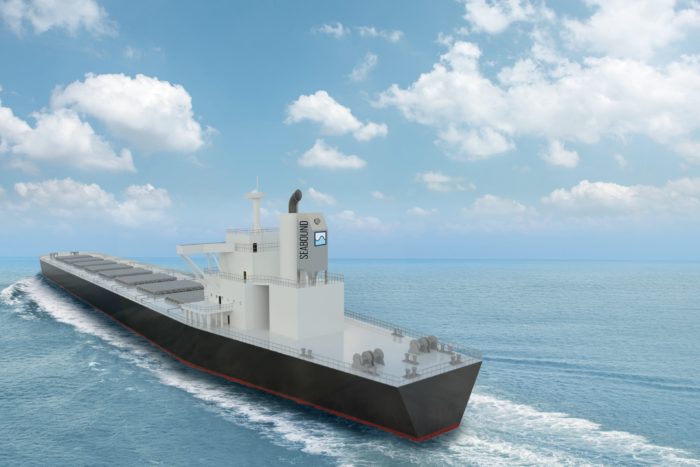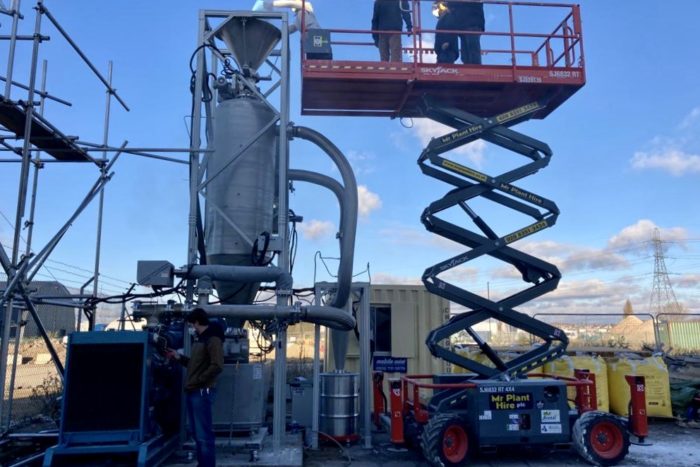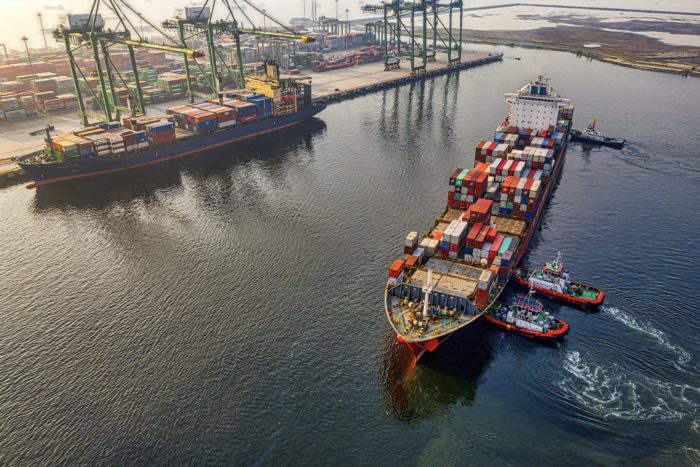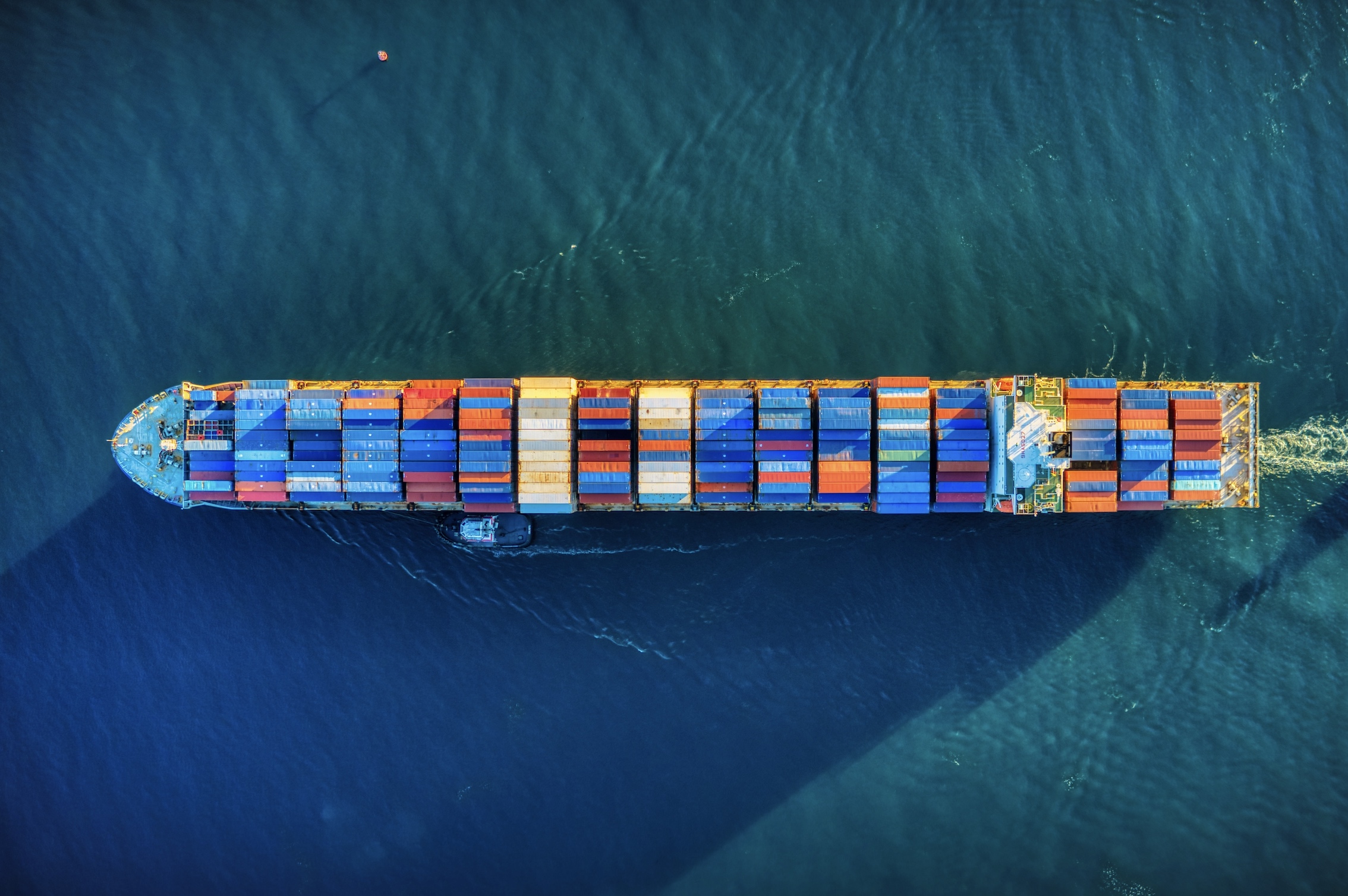More than 90% of goods around the world are transported by ship, and these ships are responsible for over 3% (one billion tons) of the global carbon dioxide emissions—an amount comparable to a major carbon-emitting country. While there has been a focus on building new electric ships and developing sustainable fuels, these measures are both expensive and years, if not decades, away. Seabound, founded in 2021 by Alisha Fredriksson and Roujia Wen, has created lime-based carbon capture equipment that can be installed near a ship’s smokestack to catch 95% of CO2 from the exhaust. Easily retrofitted onto existing ships, the technology makes decarbonizing shipping accessible, fast, and at scale. And the captured CO2 becomes limestone which can be used for building materials or can be converted back into quicklime (for use on another ship) and pure CO2 (feedstock for alternative fuels). —Jane Ratcliffe

How did you become interested in decarbonizing shipping?
A few years ago, I couldn’t stop thinking about the climate crisis and about what we could do to avert it. I started researching the problem, participating in local activism, and starting new side projects to educate myself and determine how best to contribute to solutions. One of those side projects was to support the growth of a startup called Liquid Wind, which develops alternative fuel for ships out of captured CO2 and green hydrogen. Ironically, one of the challenges of scaling up this clean fuel is sourcing accessible and affordable captured CO2 for its production. This led to the founding insight for Seabound: could we capture CO2 directly onboard ships and sell it to clean fuel companies?
As I researched this proposition and the maritime sector further, I learned that shipowners currently have no viable solutions for reducing CO2 emissions to the extent recently mandated by new global regulations. Furthermore, most of the potential upcoming solutions such as clean fuels are only suitable for brand new ships, leaving the existing fleet at risk of being scrapped prematurely. If we could develop a practical and cost-effective solution to retrofit onto existing ships, we could potentially build a new category of climate tech solution to transform this hard-to-abate industry.

How does Seabound’s technology work?
Seabound’s technology traps the CO2 in a ship’s exhaust gas to prevent it from being released into the atmosphere. We install a carbon capture device onboard a ship adjacent to its funnel. We continuously feed pebbles of quicklime into the device, which chemically react with the CO2 in the exhaust to turn into limestone. We then eject the limestone pebbles from the device and temporarily store them onboard. Once back in port, the pebbles are off-loaded and post-processed. They can then be: 1) sold directly into the construction industry as limestone to be used as building materials, or 2) separated back into quicklime pebbles and pure CO2 in order to reuse the quicklime to capture more CO2 on another ship and to sell the pure CO2 for utilization or sequestration.
It’s great that the captured CO2 can also become feedstock for alternative fuels. Can you explain that process?
There are certain alternative fuels such as electro-methanol, which are produced out of captured CO2 and green hydrogen. Once we’ve captured CO2 onboard a ship by chemically reacting it with quicklime to form limestone, we can then perform the opposite reaction on land, whereby we separate the limestone back into quicklime and pure CO2. We can then sell the pure CO2 to be used as feedstock for alternative fuels.
If we continuously repeat this process to capture CO2 onboard a ship that’s burning electro-methanol and then turn that CO2 back into fuel again, we could create a circular fuel system for the shipping industry.

Does this technology only apply to shipping vessels, or could it be applied to cruise ships? What about planes, trains and cars?
This technology could be applied to multiple types of ships, such as container ships, dry bulk carriers, tankers, and cruise ships. We wouldn’t be able to capture carbon onboard planes, however we could potentially do so onboard trains or cars.
Why is maritime transport so hard to decarbonize?
Maritime transport is technically hard to decarbonize because you need a tremendous amount of energy to move such large volumes of cargo over such long distances. For example, some container ships carry up to 20,000 containers for 30-45 day voyages. We can’t practically electrify that energy requirement yet because the ships would have to sacrifice a substantial amount of cargo in order to carry enough batteries.
Furthermore, maritime transport is hard to decarbonize because it has razor thin margins and expensive assets with 25-40 year lifetimes, which can naturally lead to conservative thinking and limited capital to invest in new technologies.

New global regulations require ships to reduce CO2 emissions by 40% by 2030. How likely does it seem that will happen?
While achieving the new regulatory targets will certainly be difficult, I think it is very likely to happen. This is because there is substantial pressure to decarbonize shipping not just from regulators but also from customers and shareholders of the shipping companies. Shipping is often considered the backbone of the global economy—carrying more than 90% of global trade—which means that its emissions are also the Scope 3 emissions of many companies around the world, who are exerting pressure on shipowners to act. Furthermore, the shipping industry faces pressure to increase the ambition of its global regulation, which currently falls short of the Paris Agreement.
Finally, I think these reductions are likely to happen because there are emerging technologies to reduce emissions from ships (such as carbon capture equipment), and these technologies could develop more quickly than we anticipate (from studying the unprecedented growth of other technologies such as solar, it seems like it can be difficult for us to accurately predict the path and pace of technology deployment).
Where are you at in the prototype process?
To date, we have built two land-based prototypes to iteratively demonstrate and test the compact carbon capture system that we are developing. The first was a large, lab-based system and the second, a much larger continuously operating device in our warehouse. Next up, we’re running our first ship-based pilot this summer to test the equipment onboard.

Can you tell us about your team? Who’s on board?
Our team currently consists of six full-time team members and a few part-time contractors. We’re lucky to have a stellar team of engineers, including two ex-SpaceX engineers (covering mechanical and controls) and seasoned marine engineers and naval architects. We found them through climate tech Slack communities, cold research and outreach, and mutual connections.
What are the next steps for Seabound?
The next steps for Seabound are to test and demonstrate that the new, compact carbon capture device we’re developing functions reliably onboard ships. Specifically, we have two ship-based pilots coming up, after which we’ll start fulfilling pre-orders from late 2024.
Outside of this technical proofpoint, we’re also building out the supply chain for our solution so that we can efficiently supply, pick up, and sell quicklime and limestone pebbles to our customers in key ports around the world.













